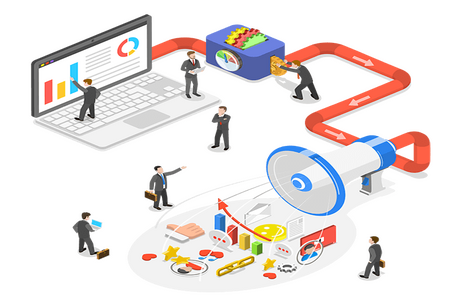Advantages of Adopting Programmatic Advertising in Digital Marketing
By Sthitaprajnya Panigrahi
 Owing to the competency to upload first-party data, augment campaigns in real-time, and lessen the unexploited ad spend, more marketers are taking advantage of programmatic advertising strategies. As a fastest-growing technology that helps restoring the control of media back into the hands of the vendor, the Programmatic advertising domain is being driven by the upsurging demand for transparency, the necessity to prevent the rising ad fraud, automation advantages, and skill to scale the return on ad spend precisely. Offering many reimbursements apart from quicker reporting times and infinite data, programmatic advertising persuades marketers and advertisers to start purchasing their media via this way.
Owing to the competency to upload first-party data, augment campaigns in real-time, and lessen the unexploited ad spend, more marketers are taking advantage of programmatic advertising strategies. As a fastest-growing technology that helps restoring the control of media back into the hands of the vendor, the Programmatic advertising domain is being driven by the upsurging demand for transparency, the necessity to prevent the rising ad fraud, automation advantages, and skill to scale the return on ad spend precisely. Offering many reimbursements apart from quicker reporting times and infinite data, programmatic advertising persuades marketers and advertisers to start purchasing their media via this way.
Mentioned below are the major reasons why numerous ad-agencies, brands, and digital marketers are shifting over to Programmatic advertising from the traditional ones.
1. Enhanced Efficiency
The inclusive effectiveness of digital advertising has significantly enhanced with the capability to measure how an operation is ongoing through the whole campaign. Owing to its Real-time measurement factor which permits the advertisers to track their campaign, programmatic advertising helps in making modifications and optimizations as and when required. Augmentation ascertains that each campaign runs efficiently, and successfully reaches only those model targeting customers meanwhile using the budget effectually.
2. Greater Audience Reach
One of the major benefits of programmatic advertising is its potential to reach the targeted audience. At any point of time, it is estimated that there are approximately 3.5 billion people on the internet on average. This figure is presumed as the expected potential reach of the advertising agencies, depending on various other targeting parameters. As there are millions of people online on internet, it is preferrable to narrow down the calculation up to the ideal consumers. But nonetheless, the potential reach via programmatic advertising is not only striking but also instantaneously perceptible.
3. Adequate Transparency and Control
Programmatic technology ensures a layer of transparency that marketers and advertisers often fail to get from the traditional advertising process. Through programmatic advertising, advertisers can witness exactly what sites their advertisements are reaching, the type of customer looking at their ad, and any type of charges associated with the commercial in real time.
4. Accurate Targeting Capabilities
The term ‘programmatic’ and ‘targeting’ are synonymous with each other. Owing to the increased flexibility of programmatic technology, advertisers can unswervingly reach their model consumers for any given target. Some of the examples that can be enlisted under this targeting are IP targeting, geolocation targeting, contextual keyword, and so on. IP targeting implies zoning in on a specific IP address and it is classically used for targeting a specific business or event. Similarly, geolocation targeting majorly comprises of east/west coast, state, city, zip code, and more.
5. Real-Time Reporting and Data Measurement
Real-time reporting and data measurement is a dream for every marketer and advertiser. Programmatic advertising offers the capability of scaling precisely how much creative a campaign is along with its overall targeting performance as soon as the campaign is launched. Although making any changes hurriedly would be unwise and it is better to wait for a significant time period to know the actual result of the campaign, but it is certainly faster than the traditional advertising. Unlike traditional advertising which incorporate billboards and print advertisements, digital advertising through programmatic advertising yield faster results and you don’t have to wait until the conclusion of the campaign to know the results.




